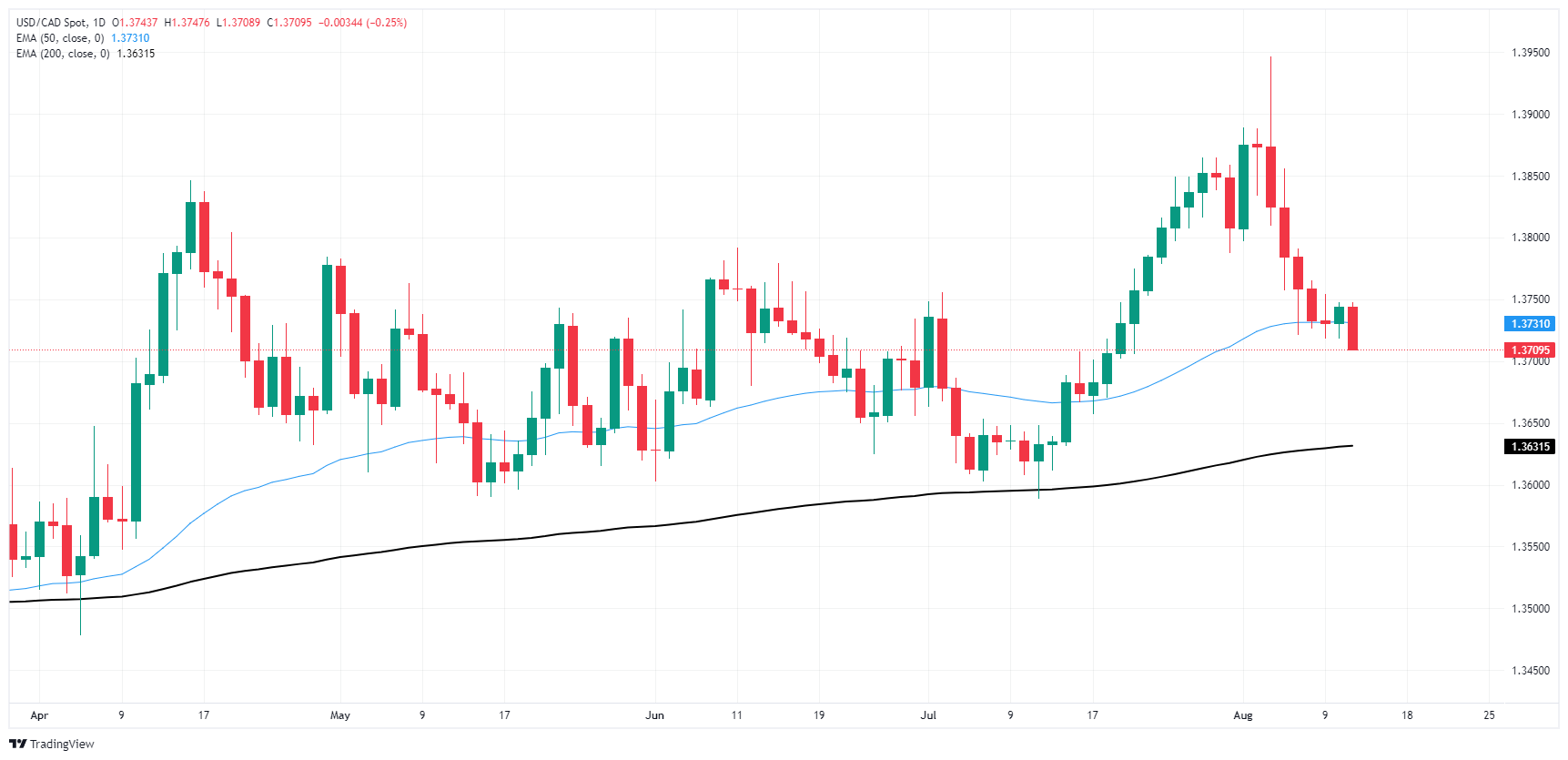Canadian Dollar softer on Tuesday but climbs over weakened Greenback

- The Canadian Dollar had little strength on Tuesday, but US Dollar was weaker.
- Canada remains absent from economic calendar as markets focus on inflation figures.
- US PPI inflation cooled further, US CPI inflation in the barrel for Wednesday.
The Canadian Dollar (CAD) found higher ground against the Greenback but otherwise chalked in a poor performance across the major currencies board on Tuesday. Market sentiment has tilted to the upside after US Producer Price Index (PCI) inflation receded in July, sparking a move back into bets of a double rate cut from the Federal Reserve (Fed) in September.
Canada remains absent from the economic data docket this week, leaving traders to focus squarely on Wednesday’s upcoming US Consumer Price Index (CPI) inflation print. US CPI inflation is expected to continue the trend of cooling toward the Fed’s 2% annual inflation target.
Daily digest market movers: Canadian Dollar loses race with Greenback to the bottom
- CAD softened on Tuesday yet gained one-quarter of one percent against the USD.
- US PPI inflation ticked down to 2.2% YoY in July, less than the forecast for 2.3% and easing further back from the previous period’s revised 2.7%.
- Cooling US inflation figures battered the Greenback, sending the USD down across the board.
- Markets still await Wednesday’s US CPI inflation print, expected to fall in-line with overall declining inflation pressures.
- Rate markets see greater-than-even odds of a double cut of 50 basis points in September from the Fed, up from the start of the week but still below last week’s 70% high.
Canadian Dollar price forecast: Falling Greenback drags USD/CAD down from 1.3750
USD/CAD dove toward 1.3700 on Tuesday, falling back below the 50-day Exponential Moving Average (EMA) at 1.3730. The pair has fallen further back from the 1.3750 technical level as pressures mount on the Greenback, sending the CAD into three-week highs against the US Dollar.
Long-term technicals still favor long positions as the pair continues to trade north of the 200-day EMA at 1.3630, but topside momentum remains limited after USD/CAD bidders failed to capture the 1.3950 peak early last week.
USD/CAD daily chart
Canadian Dollar FAQs
The key factors driving the Canadian Dollar (CAD) are the level of interest rates set by the Bank of Canada (BoC), the price of Oil, Canada’s largest export, the health of its economy, inflation and the Trade Balance, which is the difference between the value of Canada’s exports versus its imports. Other factors include market sentiment – whether investors are taking on more risky assets (risk-on) or seeking safe-havens (risk-off) – with risk-on being CAD-positive. As its largest trading partner, the health of the US economy is also a key factor influencing the Canadian Dollar.
The Bank of Canada (BoC) has a significant influence on the Canadian Dollar by setting the level of interest rates that banks can lend to one another. This influences the level of interest rates for everyone. The main goal of the BoC is to maintain inflation at 1-3% by adjusting interest rates up or down. Relatively higher interest rates tend to be positive for the CAD. The Bank of Canada can also use quantitative easing and tightening to influence credit conditions, with the former CAD-negative and the latter CAD-positive.
The price of Oil is a key factor impacting the value of the Canadian Dollar. Petroleum is Canada’s biggest export, so Oil price tends to have an immediate impact on the CAD value. Generally, if Oil price rises CAD also goes up, as aggregate demand for the currency increases. The opposite is the case if the price of Oil falls. Higher Oil prices also tend to result in a greater likelihood of a positive Trade Balance, which is also supportive of the CAD.
While inflation had always traditionally been thought of as a negative factor for a currency since it lowers the value of money, the opposite has actually been the case in modern times with the relaxation of cross-border capital controls. Higher inflation tends to lead central banks to put up interest rates which attracts more capital inflows from global investors seeking a lucrative place to keep their money. This increases demand for the local currency, which in Canada’s case is the Canadian Dollar.
Macroeconomic data releases gauge the health of the economy and can have an impact on the Canadian Dollar. Indicators such as GDP, Manufacturing and Services PMIs, employment, and consumer sentiment surveys can all influence the direction of the CAD. A strong economy is good for the Canadian Dollar. Not only does it attract more foreign investment but it may encourage the Bank of Canada to put up interest rates, leading to a stronger currency. If economic data is weak, however, the CAD is likely to fall.
